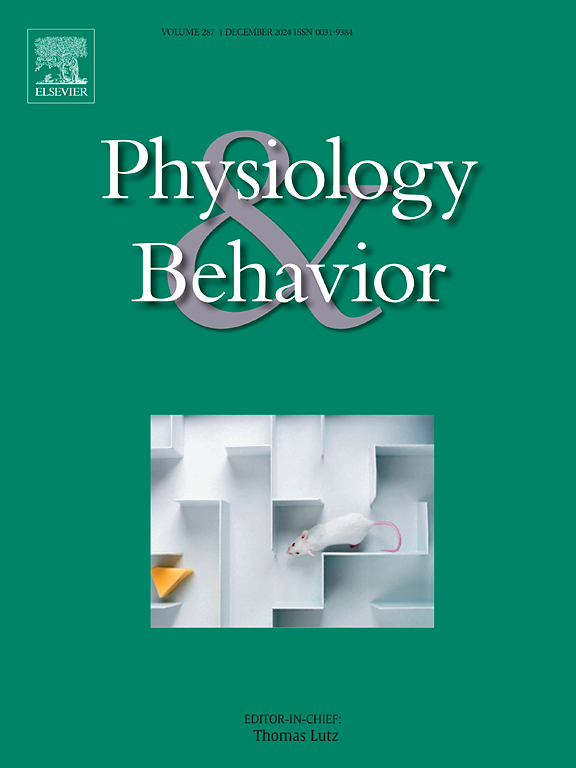Decoding social touch: A multi-modal exploration of tactile perception, gender and culture
IF 2.5
3区 医学
Q2 BEHAVIORAL SCIENCES
引用次数: 0
Abstract
Social touch plays a vital role in human development, communication, and general well-being. However, the mechanisms underlying how social touch elicits pleasant or aversive responses are poorly understood. Furthermore, it remains unclear how alterations in sensory processing, at both the perceptual level (i.e. detection and discrimination of stimuli) and behavioral level (i.e. response to stimuli), shape the experience of social touch, in addition to contextual factors such as gender and culture. In the current study, we used vibrotactile psychophysics and a novel social touch paradigm to assess the association between tactile perceptual differences and social touch preference in two cross-cultural cohorts (56 adults in the UK and 21 adults in Singapore). We found that participants with poorer tactile discrimination thresholds in both cohorts had lower pleasantness ratings for social touch, and higher pleasantness ratings for non-social touch, with a stronger predictive effect than gender or culture alone. We also found evidence of strong gender effects, such that female participants rated different-gender touch as less pleasant than males. Singaporean participants also showed lower preferences for social touch than UK participants. Our results suggest a bottom-up perceptual mechanism in linking poorer tactile discrimination with greater social touch aversion in adults. Furthermore, while some cultural differences between cohorts were observed at the contextual level, perceptual contributions to social touch preference appeared to be conserved, suggesting a shared biological mechanism between cultures. These findings could have implications for clinical conditions that are characterised by altered sensory and social processing.
解码社会触摸:触觉感知、性别和文化的多模态探索
社交接触在人类发展、交流和总体幸福感中起着至关重要的作用。然而,社会接触如何引发愉快或厌恶反应的机制尚不清楚。此外,除了性别和文化等背景因素外,目前还不清楚知觉水平(即对刺激的检测和辨别)和行为水平(即对刺激的反应)的感觉处理变化如何塑造社交触摸体验。在本研究中,我们使用振动触觉心理物理学和一种新的社会触觉范式来评估两个跨文化队列(56名英国成年人和21名新加坡成年人)的触觉感知差异和社会触觉偏好之间的关系。我们发现,在这两组中,触觉辨别阈值较低的参与者在社交触摸方面的愉悦度评分较低,而在非社交触摸方面的愉悦度评分较高,这比性别或文化本身具有更强的预测作用。我们还发现了强烈的性别影响的证据,例如女性参与者认为不同性别的触摸比男性更不愉快。新加坡参与者对社交接触的偏好也低于英国参与者。我们的研究结果表明,一种自下而上的感知机制将成年人较差的触觉辨别能力与较强的社交触觉厌恶联系起来。此外,虽然在语境水平上观察到群体之间的一些文化差异,但知觉对社交触摸偏好的贡献似乎是保守的,这表明文化之间存在共同的生物机制。这些发现可能会对以感觉和社会处理改变为特征的临床状况产生影响。
本文章由计算机程序翻译,如有差异,请以英文原文为准。
求助全文
约1分钟内获得全文
求助全文
来源期刊

Physiology & Behavior
医学-行为科学
CiteScore
5.70
自引率
3.40%
发文量
274
审稿时长
47 days
期刊介绍:
Physiology & Behavior is aimed at the causal physiological mechanisms of behavior and its modulation by environmental factors. The journal invites original reports in the broad area of behavioral and cognitive neuroscience, in which at least one variable is physiological and the primary emphasis and theoretical context are behavioral. The range of subjects includes behavioral neuroendocrinology, psychoneuroimmunology, learning and memory, ingestion, social behavior, and studies related to the mechanisms of psychopathology. Contemporary reviews and theoretical articles are welcomed and the Editors invite such proposals from interested authors.
 求助内容:
求助内容: 应助结果提醒方式:
应助结果提醒方式:


